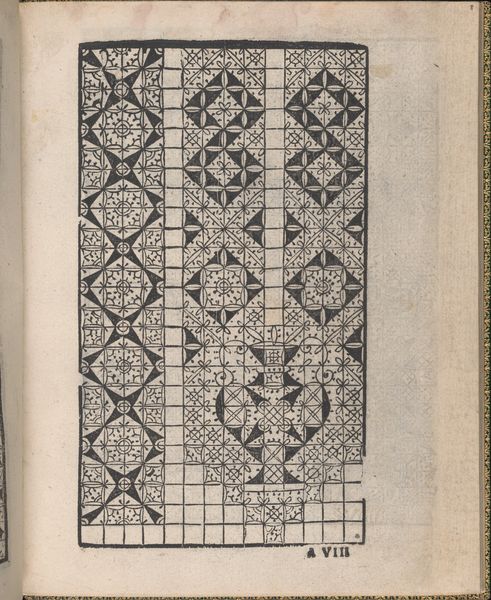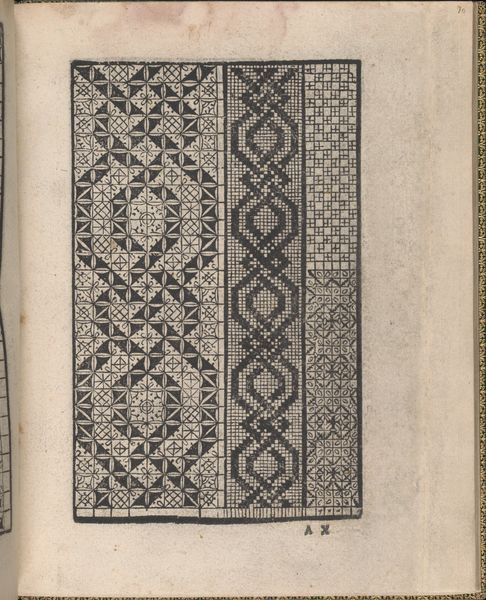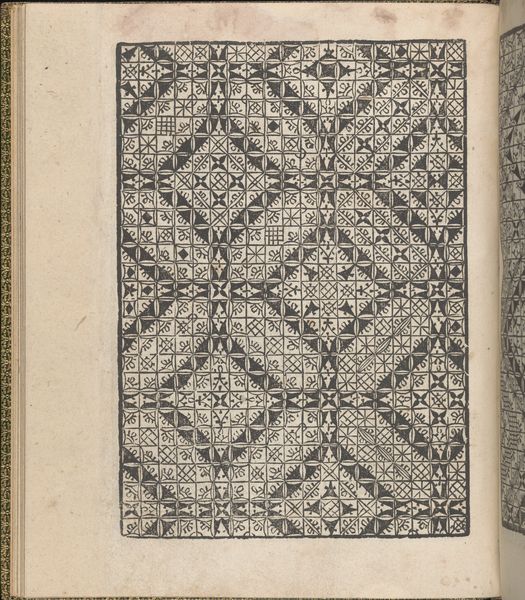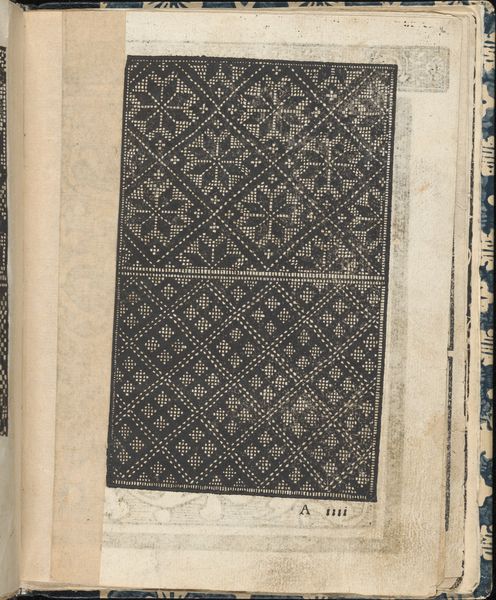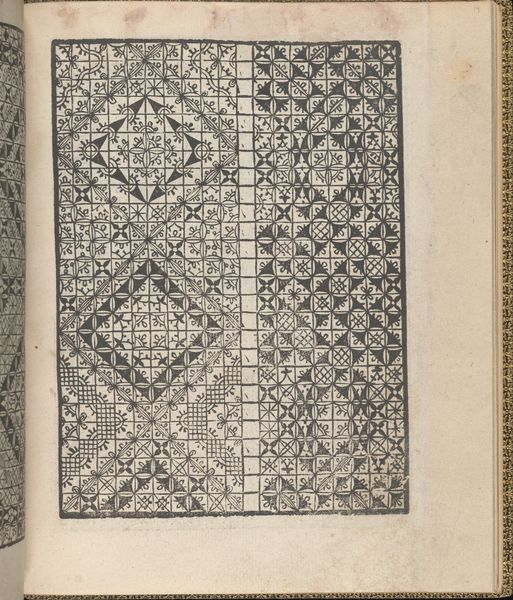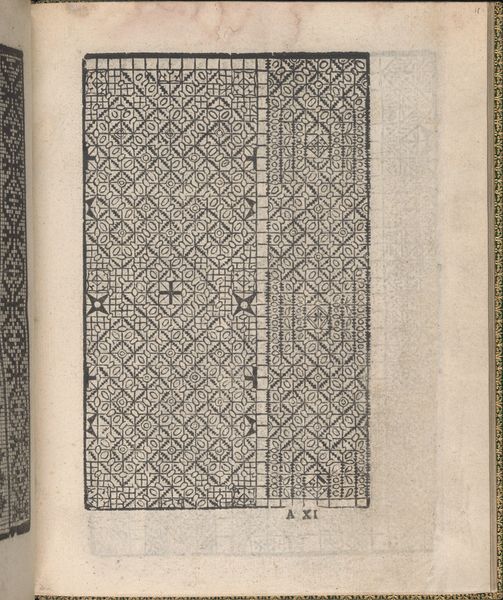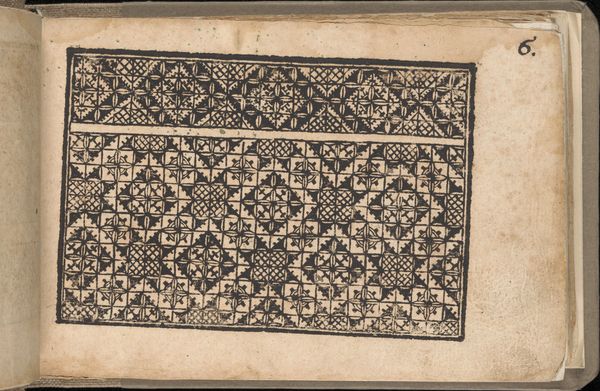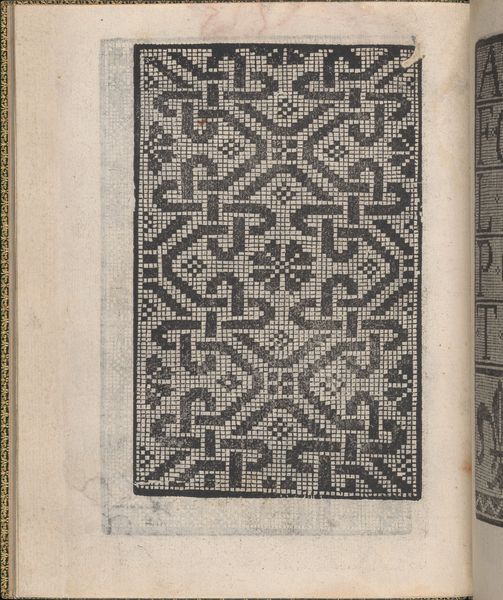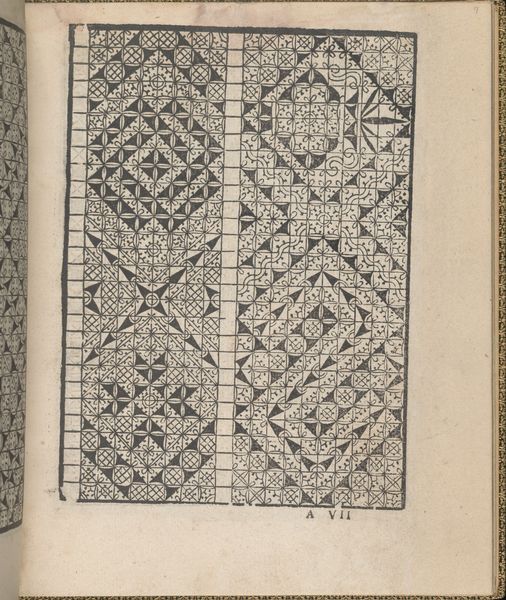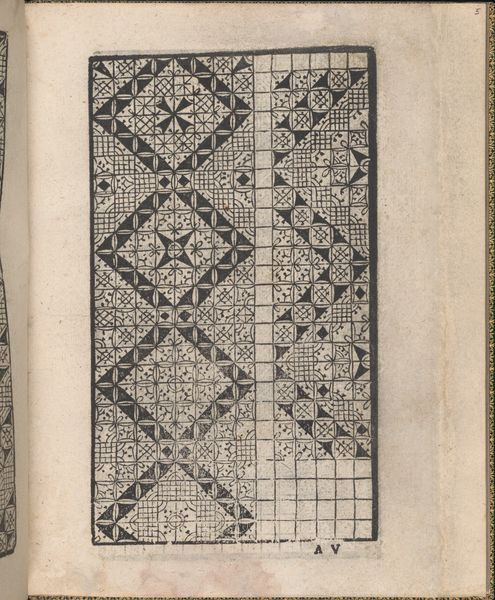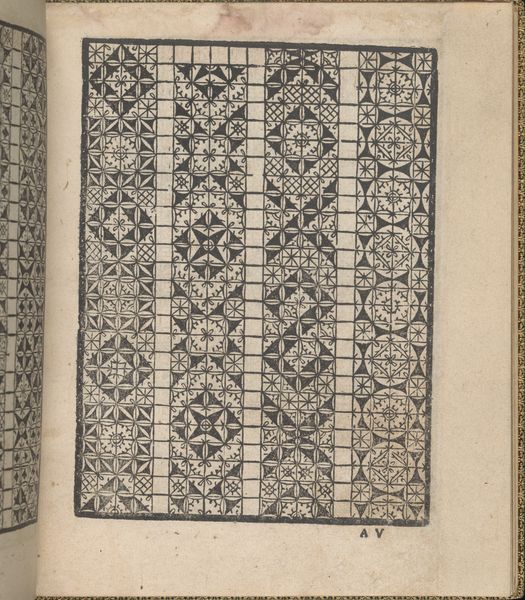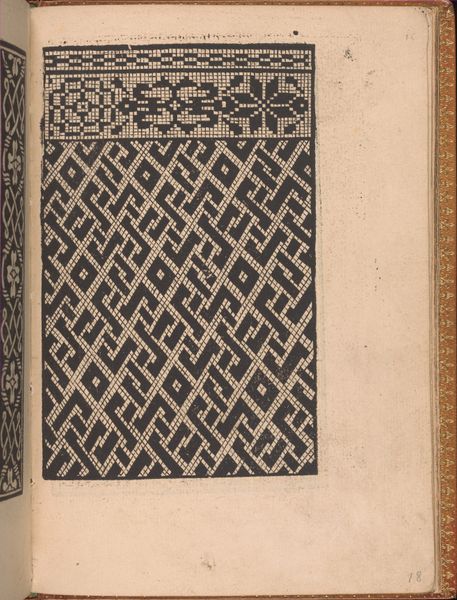
Ornamento delle belle & virtuose donne, page 5 (verso) 1554
0:00
0:00
drawing, graphic-art, print, engraving
#
drawing
#
graphic-art
# print
#
11_renaissance
#
geometric
#
decorative-art
#
italian-renaissance
#
engraving
Dimensions: Overall: 7 1/2 x 5 7/8 in. (19 x 15 cm)
Copyright: Public Domain
Curator: Matteo Pagano’s “Ornamento delle belle & virtuose donne, page 5 (verso)” dates back to 1554. It’s a stunning example of 16th-century Italian design, executed as an engraving. Editor: It's intricate. I’m struck by how incredibly detailed and almost dizzying the geometric patterns are. The repetition creates a kind of mesmerizing effect. I immediately think about textiles and craft traditions. Curator: Precisely. These pattern books were very popular, serving as guides for lacemakers and embroiderers. “Ornamento,” meaning "ornament" or "embellishment," really highlights the intent. The title also offers insight into its social context, framing needlework as a pursuit of “virtuous women.” Editor: Yes, but that very idea is problematic, right? Labeling crafts traditionally associated with women as simply "ornament" limits their recognition as serious artistic endeavors. The prints become historical artifacts in a way, showcasing that inherent devaluation of certain types of labor, specifically women's work. Curator: That's a valid point. The Renaissance saw a rise in printed pattern books, reflecting both increasing literacy and a burgeoning market for domestic skills. Prints allowed for wider dissemination of design ideas. Pagano here adopts this idea with these geometric figures. Editor: Right, and those designs wouldn’t only beautify domestic life. It offered an arena, although sometimes limited, where women could exercise skill, creativity and economic power within prescribed roles. It prompts me to consider how the very act of creation could have been a subtle form of resistance, of self-expression in spaces otherwise regulated by patriarchal norms. Curator: Interesting perspective. Examining the lines, one can see that while appearing uniform, there’s actually quite a bit of variation from tile to tile. It wasn’t simply replication of a design, but rather, a creative take each time. Editor: Absolutely. It urges me to investigate these supposedly simple designs and recognize how they’ve functioned to confine while simultaneously allowing creativity to flourish. Curator: Thanks to those observations, I won’t see it in the same light again. I'm left to further contemplate the role of gender and social expectations during the Italian Renaissance, especially as these are illustrated in a small but important image such as this one. Editor: Likewise. Thinking through labor, design, and resistance always offers another layer of meaning and consideration for viewers encountering works like this for the first time.
Comments
No comments
Be the first to comment and join the conversation on the ultimate creative platform.

